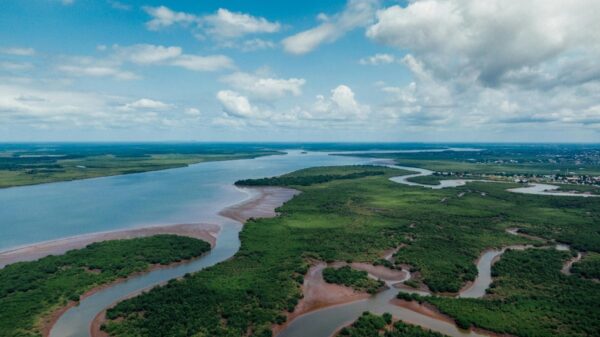Research has uncovered that nearly half of the world’s estuaries have been directly altered by human activities.
Estuaries, vital transition zones between freshwater and marine environments can be called ‘nurseries of the sea’ as not only animals but also humans commonly rely on them for nesting and breeding as well as tourism, fisheries, and recreational activities. However, these spaces are becoming ever more stressed and degraded globally. Human impacts, such as deforestation, urbanization, and river flow diversion, have significantly altered estuarine ecosystems, leading to the loss of tidal flats and wetlands. Large-scale land reclamation projects, particularly in countries like South Korea, have further exacerbated estuarine surface area loss.
Human modifications
To evaluate the global changes in estuarine areas and understand the role of human activities, the researchers measured estuarine surface area changes for 2,396 estuaries worldwide between 1984 and 2019. Using a combination of remote sensing data and historical maps, the study assessed estuarine surface area changes and identified factors contributing to these changes. They found that human impacts, such as estuarine dams and land reclamation, are significant drivers of estuarine change. Estuarine dams alter sediment transport dynamics, increasing sediment deposition and potentially reorganizing entire estuarine systems. Furthermore, activities like channel dredging and sand mining disturb estuarine systems, leading to channel incision and sediment redistribution. Large-scale land reclamation projects drastically accelerate erosion rates, resulting in the loss of valuable tidal flats and contributing to biological invasions, declining water quality, and decreased storm surge protection.
The findings demonstrated that economic development significantly influenced estuarine shorelines worldwide, with nearly half of estuaries modified by humans, resulting in the loss of around 1,027 square kilometres (19% of global estuarine surface area loss) over the past 35 years.
Guan-hong Lee, a geoscientist at Inha University in South Korea who led the study said “Estuary change is really interesting, especially in 20th century, because estuaries have been altered by humans by the construction of estuarine dams and land reclamation. When estuaries are modified by humans, the consequences for land loss are surprisingly huge.”
Local economy influence
The pace of estuarine habitat change was found to be influenced by local economic development and conservation incentives, particularly in highly developed countries. Low-income countries experience minimal anthropogenic estuarine change, while middle-income countries undergo massive estuarine loss due to increasing wealth and lack of conservation efforts. However, estuarine loss stabilizes in high-income countries with the adoption of conservation laws. Decision-making regarding estuarine habitat protection or modification depends largely on local economies, significantly impacting estuarine morphological change.
Many developed countries, such as the Netherlands and Germany, have already modified or lost large areas of urban estuaries. Countries with significant modifications to their estuaries could serve as a warning of sorts for developing countries, and acting soon to conserve estuaries is an opportunity to protect developing countries’ environmental and economic benefits, Lee said.
The full paper can be read here: Economic development drives massive global estuarine loss in the Anthropocene
